The Cubs took Hector Rondon in the 2012 Rule 5 draft, stealing him out of the Cleveland Indians farm system. Rondon pitched out of the bullpen and withstood a rough first half of the 2013 season before rebounding and pitching well down the stretch. His 97 mph fastball and 86 mph slider are his bread and butter, and he used them well in his first season as the Cubs closer in 2014.
Although he’s been pretty good overall in 2015, he’s struggled at times with throwing strikes and getting into shaky situations. Those are struggles you really don’t want to see from your closer, especially on a team that’s trying to stay in the playoff chase. Things came to a boil when Joe Maddon pulled Rondon after walking the only batter he faced last Saturday in a 4-2 win over Washington.
The eye-test told me that things just haven’t looked the same with Rondon this year, and while he’s still been pretty good, he hasn’t been the dominant guy he was from the second half of 2013 through 2014. Rondon has posted a 2.96 ERA with a 3.40 FIP, as opposed to his 2.42 ERA and 2.23 FIP last year. So with a little digging, I found some information at Brooks Baseball that shed a little light on what’s different this year.
First, I thought I’d take a look at his velocity and see if anything has changed dramatically. Has his fastball dropped? Is the gap between his fastball and his slider not big enough? Too big? Everything seems to look relatively the same as it always has been. His fastball still sits at 95-97, and while his slider has been consistently a tiny bit faster than it was early on in 2014, the overall gap between his fastball and slider velocity has remained consistent.
This graph is created based off of total pitches thrown, so it’s more important to note the gap between balls thrown and strikes thrown in 2015 than it is to note the sheer amount of balls or strikes thrown. The gap between balls and strikes in 2015 is a big jump versus last year, with only June of 2014 showing a similar gap, a month in which Rondon posted a 9.35 ERA in 8 2/3 innings pitched. So, knowing that he’s throwing more balls than ever before, I went looking for why that’s happening.
It’s not all that surprising that, if his percentage of pitches outside the zone are going up, he’s throwing more of his fastballs outside the zone than is normal for him. From July to the end of 2014, he was consistently throwing his fastball for strikes, and it worked well for him. His ERA over that span was 1.13 and he held opposing hitters to a .443 OPS. This is an important component, but I think the bigger deal is his slider usage.
Note that, again, we’re looking at a graph of total pitches thrown. Rondon has always thrown more of his sliders outside the zone, and that makes sense. It’s his out pitch; he throws fastballs in the zone (in theory) and sliders that dive outside the zone to get batters to chase. But he’s essentially doubled the amount of sliders that he’s thrown, and it’s had a negative effect.
Rondon threw 10 or more sliders in a game exactly one time in 2014, and it was in a game that he threw two innings. He’s done it four times already in 2015, once throwing 19 sliders in a single inning, and his stats tell an interesting tale. He’s thrown a total of four innings, giving up 10 hits, six earned runs, and two walks with five strikeouts in those four games. It’s a small sample size, but it correctly illustrates my point.
With the knowledge that Rondon’s velocity isn’t the root of his issues, it’s fair to say that the problem lies in the rise in slider usage. In last Sunday’s outing, his most recent prior to Thursday night’s save, he made an interesting change. He threw only two fastballs, three sliders, and six cutters. He threw both fastballs and five of the cutters for strikes, while all three sliders were thrown outside the zone. He got all three outs on shallow fly balls, two of those came on cutters.
It’s only one game, but he had rarely thrown the cutter at all prior to that game. It’s possible I’m reading too much into it, but this has Chris Bosio written all over it. For Rondon to be dominant like he has in the past, he needs to be able to throw his fastball for strikes and use it, and possibly a cutter, to set up his slider as the out pitch.
Sunday’s game is a good start to getting him where he needs to be, as was Thursday, when he tossed six four-seamers—five for strikes—induced his only strikeout on a cutter, and went to his slider just twice while picking up his 11th save. And while these last two outings are certainly a positive development, Rondon still evokes some ambivalent feelings from Cubs fans when he takes the mound in a close game, and it remains to be seen whether he can continue throwing strikes and get batters out.
Lead photo courtesy of Matt Marton-USA TODAY Sports
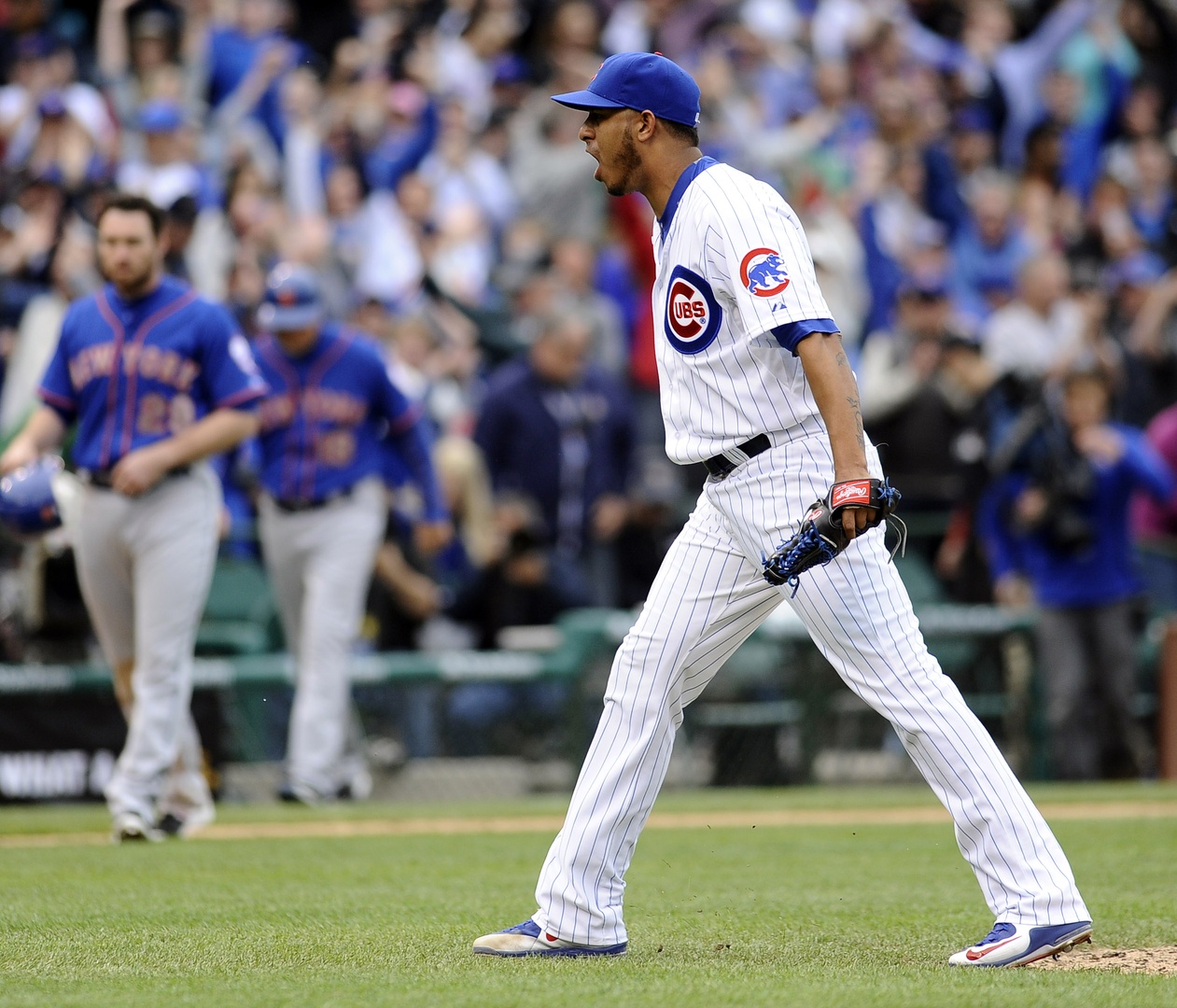
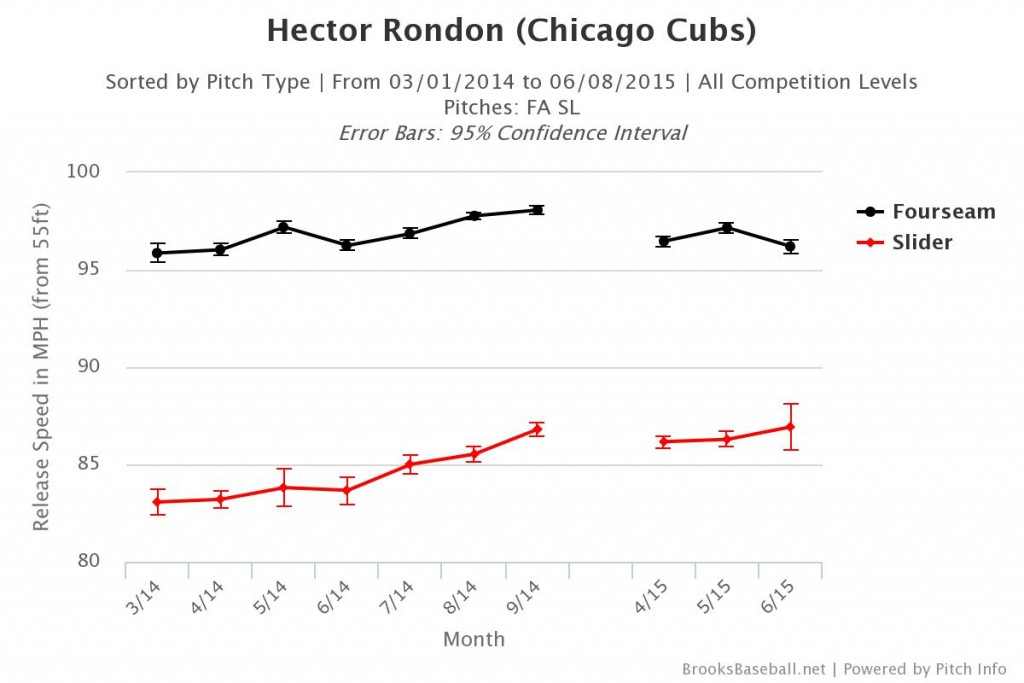
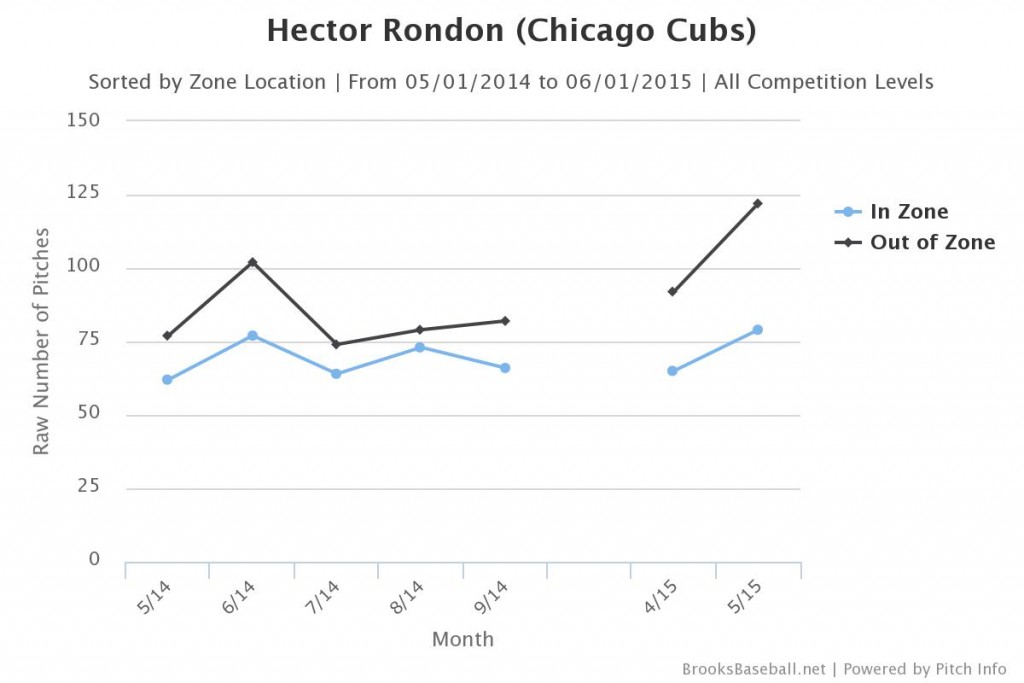
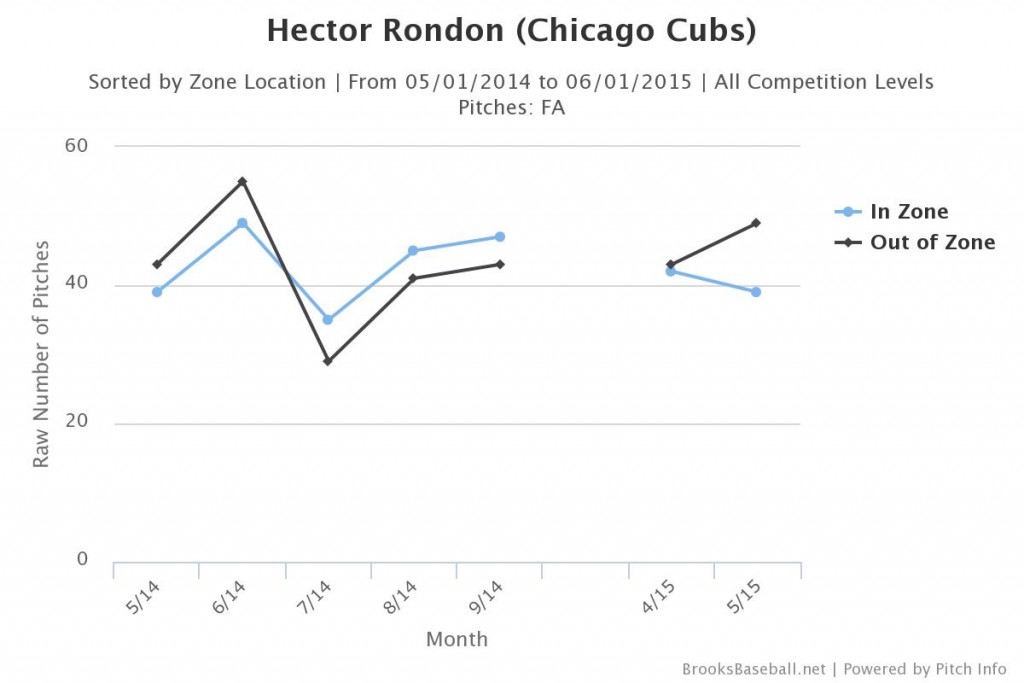
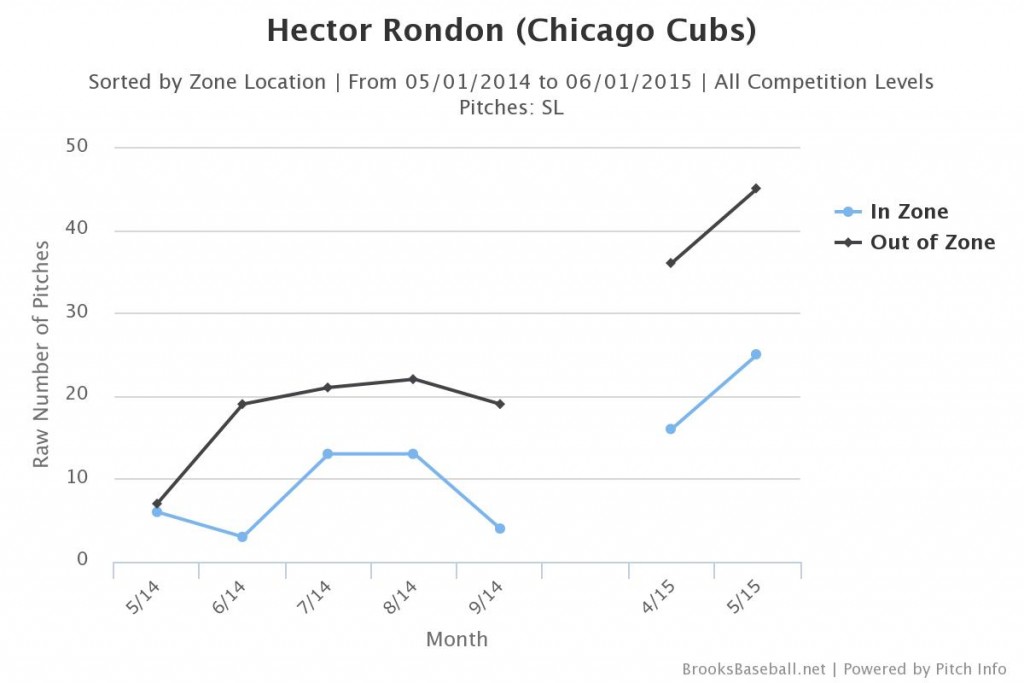
Is it fair to say that missing the zone with the FB is the issue? This causing him to throw more sliders which are not as easily controlled leading to good hitters counts.
It’s fair to say that. I think it’s kind of a “chicken and egg” thing. Is he relying on the slider too much because he’s lost control on the fastball? Or is he trying to use sliders to set guys up and get them out with fastballs? Or is it something else? I think the fact that the cutter has popped up again and is somewhat replacing his fastball suggests to me that he’s having an issue controlling it and has felt more comfortable throwing his slider.